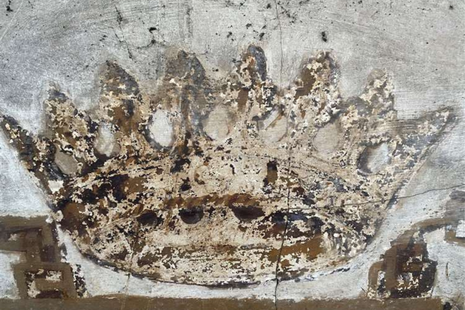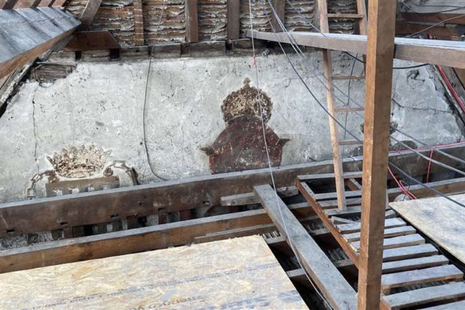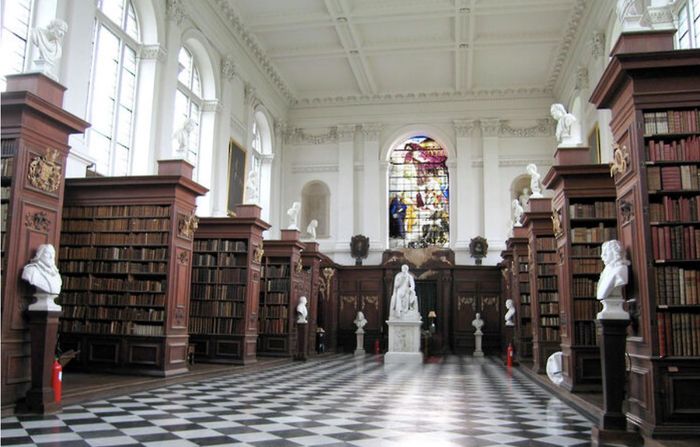16th century royal tribute paintings found at Christ’s
The three hundred year old paintings were uncovered by builders working on the college’s renovation

16th century paintings commemorating the college patron, Lady Margaret Beaufort, have been discovered at Christ’s. This marks the first discovery of the original wall paints since their last recorded sighting around 1738.
Builders working on the college’s renovation uncovered the three hundred year old paintings, which included three crowned motifs thought to depict a red Lancastrian rose, a portcullis and a fleur-de-lis. The design is approximately six metres in width.
The paintings were discovered in what is thought to be part of the north-west wall of the original library.

As the portcullis is the symbol of the Beaufort family badge, the paintings are believed to be in honour of Lady Margaret Beaufort, the college’s patron and Henry VII’s mother.
Dr. Christina Faraday, an art historian at the University and specialist in Tudor visual and material culture, said: “This is a really exciting and unusual discovery. A powerful and pious woman, with a keen interest in scholarship, Lady Margaret left her indelible mark on the college.”
She believed the paintings show “the ways that the college celebrated and advertised its royal patron during the early years of the 16th Century, following its re-founding”.
Dr. Faraday added: “The wall paintings are an early example of her family’s savvy use of visual ‘branding’ even beyond the royal court.”
“Henry VII had a very weak claim to the throne, but became adept at using visual symbols like this to promote his kingship. The motifs continue to be tied up with the college’s identity to this day, but as an early example of Tudor ‘marketing’, the wall paintings demonstrate the long history of something we think of as a modern phenomenon.”
She noted that “such survivals are extremely unusual”.
Lord Simon McDonald, master of Christ’s, said: “After basic restoration, we will store the paintings away once again, a time-capsule which might be uncovered in another 300 years.”
 Interviews / You don’t need to peak at Cambridge, says Robin Harding31 December 2025
Interviews / You don’t need to peak at Cambridge, says Robin Harding31 December 2025 Comment / What happened to men at Cambridge?31 December 2025
Comment / What happened to men at Cambridge?31 December 2025 News / Unions protest handling of redundancies at Epidemiology Unit30 December 2025
News / Unions protest handling of redundancies at Epidemiology Unit30 December 2025 Features / ‘Treated like we’re incompetent’: ents officers on college micromanagement30 December 2025
Features / ‘Treated like we’re incompetent’: ents officers on college micromanagement30 December 2025 News / Varsity’s biggest stories of 202531 December 2025
News / Varsity’s biggest stories of 202531 December 2025










